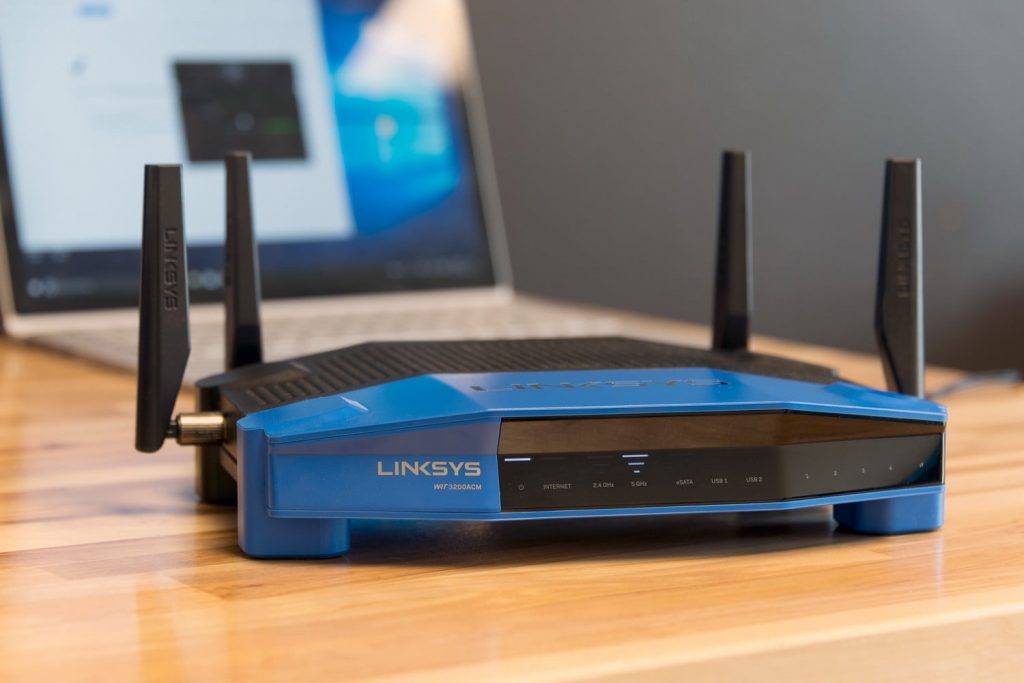Are you having trouble connecting to your WiFi network because you forgot your password?
It happens to all of us, especially if the password is a complicated and strong encryption key with many letters and characters.
Not to worry, as there are several ways to help you learn how to find a wireless encryption key, and we will share them with you in the following section.

How to Find a Wireless Encryption Key
You can find the wireless encryption key in several ways, most commonly by reading it directly from the back of the router itself. But if the key has been changed, you can find it from within the router’s configuration utility using a PC, Mac, Android, or iOS device.
Depending on what you have at your disposal, we will elaborate on how to find your network’s encryption key in the following sections.
Reading it directly from the back of the router
The most common way of finding your network’s encryption key is by reading it from the back of the router. You can use this method if you’ve just purchased your router and it’s the first time you’re setting it up.
Many routers have factory-reset WiFi encryption keys printed somewhere on the back of the device, next to the serial number or product code.
The encryption key can also be located in the instructions manual within the box, so if you can’t find it on the router, then make sure to check there as well.
If you’ve already changed the encryption key, looking for it on the router or the instruction manual will be pointless unless you reset it to its factory settings. In that case, you will restore the factory key, but you will also lose any network settings you may have set up.
Read more: How to Control Devices Connected to Your WiFi
Using your Windows PC to find the key
If you’re using a Windows PC and your device is already connected to the network, then you can find it like this:
- Through the “Start” menu, search for “Network and Sharing Center”.
- Look for the “Wireless” icon and click the “Properties” option.
- In “Properties”, find the tab called “Security”.
- Within the “Security” tab, checkmark the option to “Show Characters”, and this will show you the current WiFi encryption key of your network.
Finding the encryption key on Mac
Finding your WiFi encryption key on Mac is very similar to the one on Windows, as long as the device is already connected to the network. You can do it by following these steps:
- Select the search function (magnifying glass) icon in the upper right corner of the screen.
- Type “Keychain Access” into the search bar, and look for your WiFi network’s name on the screen that appears.
- Select the name of your network and click the “Show Password” option.
- If your Mac is locked with a personal password, it will ask you to enter it before displaying the network encryption key.
Using an Android or iOS device to find the WiFi encryption key
Another way to find a wireless encryption key is by using an Android or iOS device. However, the process is different for each operating system.
Finding the key on an Android device
To locate the encryption key on an Android device, you first need to have root authorization enabled on the device to access files containing the information. If your device has root access, then follow these steps:
- Using the “File Manager”, locate the folder named “Data” and look for another folder called “Misc”.
- Within the “Misc” folder, there should be several more folders, one of which is named “WiFi”.
- Inside this folder, there should be a file named “wpa_supplicant.conf”.
- Tap and hold this file and select the “View as text” option.
- This file contains all the information you need about your WiFi network, including the encryption key, which should be under the “PSK” line and enclosed in quotes.
Finding the key on an iOS device
To find the encryption key on iOS, you don’t require root permission or access like on Android. The process is similar to the one on Mac:
- Find the “iCloud” tab in the “Settings” menu.
- Enable “Passwords and Keychain” and start a new hotspot network by going back to “Settings”.
- Once you enable a hotspot network from your iPhone, use that network and connect to your Mac.
- From your Mac, select the “Search” function and look for “Keychain Access”.
- Once there, type the name of your WiFi and select it once it appears.
- Select the “Show Password” checkbox, which will give you the encryption key of the WiFi network.
Types of Wireless Encryption Keys
For completeness, we will also cover the types of Wireless encryption keys used today and their characteristics.
WEP (Wired Equivalent Privacy)
WEP was used in the late 90s to secure WiFi networks with 64-bit encryption. Although it was later upgraded to 128-bit encryption, the WEP encryption keys became obsolete due to their inability to provide strong protection against unauthorized attacks.
Even though WEP is still present as an encryption option in modern routers, it is mainly so to satisfy eventual backward compatibility issues with older hardware.
WPA (WiFi Protected Access)
WPA was introduced in 2003. It was meant to be a transition point between the obsolete WEP and the modern and popular WPA2.
WPA supported 256-bit password encryption, many possibilities, and higher security. It also incorporated the Advanced Encryption Standard (AES).
WPA2
WPA2 is still the most popular and widely used encryption method for WiFi networks. It is an improved version of WPA, with higher levels of AES integration and an introduction of the CCMP (Counter Cipher Mode) protocol.
This encryption method is very tough to bypass, as the attacker requires access to the local area network, a significant amount of computer resources, and time.
WPA3
WPA3 was introduced by the Wi-Fi Alliance in 2018 as a further improvement of WPA2, replacing the PSK (Pre-shared key) exchange with the SAE (Simultaneous Authentication of Equals) exchange, meaning the network becomes even more secure.
Also read: How to Remove a Wi-Fi Network From Mac

Conclusion
As you were able to see, finding the wireless encryption key depends on the device you’re using, but in general, it is a straightforward process. It doesn’t require extensive knowledge or understanding of how networks work, and without a step-by-step guide, you now know how to find a wireless encryption key on any device.